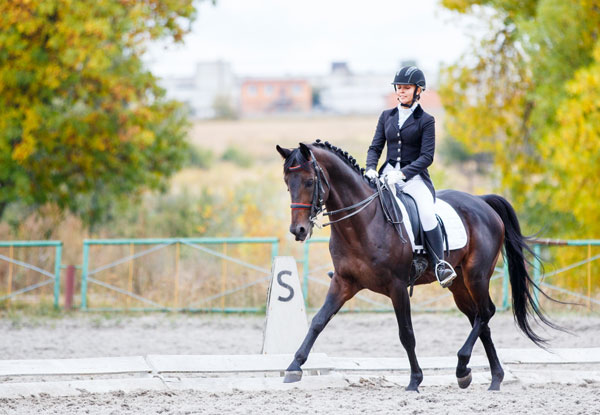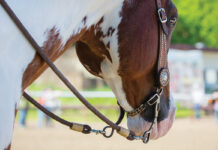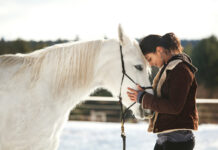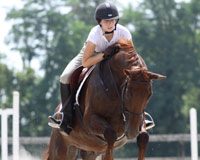
Maybe you’ve seen dressage in person or in photos and video. Perhaps you’ve even dabbled in it yourself with some lessons or a bit of experimentation guided by an online tutorial or a magazine article. Either way, you’re drawn to the grace and beauty of a horse and rider dancing together in harmony, and you wonder how they got there, and if you and your own horse could ever achieve something similar. And it’s quite possible that you can, but there are some must-haves—and you might be surprised to learn that they don’t include an expensive imported warmblood or the latest blinged-out bridle. Read on and let’s see if you and your horse have what it takes to advance in the discipline of dressage!
- Three good—or at least decent—gaits. Note that I’m talking about traditional dressage here, not gaited or Western dressage or other offshoots, which are a subject for another day. The judging of dressage starts with—above all else—a correct walk, trot, and canter.What does that mean? The gaits are pure and in a clear rhythm: four-beat walk, two-beat trot, three-beat canter. There are umpteen reasons that a gait may lose its purity, ranging from lameness to tension to incorrect riding. A horse with a persistent hitch in its gitalong is going to struggle in dressage, and possibly not advance, unless that issue is successfully addressed.
- Core strength and body control. These incorporate the concept of “independent seat and hands,” and refer to a rider whose balance is good enough not to rely on the reins to stay in the saddle. The sitting trot, which comes into every dressage rider’s life at some point, does not require sheer, brute strength. What it requires is enough tone in the core—the part of your body from waist to knees—to “stay with” the horse’s motion, and enough overall strength and suppleness to do things like allow your hips to move in time with your horse’s hind legs, or to simultaneously apply the touch of a calf, close a thigh, and give a squeeze with one rein while relaxing the opposite wrist. Yeah, it’s kind of like patting your head and rubbing your stomach at the same time. Body control. Core strength. Alignment. Flexibility. Symmetry. A tall order! No wonder these are things most dressage riders work on, pretty much forever.
- A tolerance for repetition. I had an event horse—an off-the-track Thoroughbred—who really didn’t like dressage. He actually had talent for it, but he got bored with ring work and could easily have become sour. He needed the variety of jumping and hacking to make the dressage work palatable. My current mount is a mouse in a horse’s body. He is fearful, hates change, and gets security from knowing exactly what is expected of him. The clarity and repetition of dressage are right up his psychological alley. This is not to say that only insecure horses like dressage, but one that’s prone to becoming ring-sour may not enjoy the career. A good dressage horse also has to cede control to the rider, which is difficult for some independent-minded equine personalities to do.zLikewise, riders who are diehard adrenaline junkies may prefer jumping or some other type of “faster/higher/stronger” sport. Equestrian disciplines are called disciplines for a reason, in that they require patience, practice, and attention to detail in order to improve. A rider whose main objective in riding dressage is to perform “tricks,” like flying changes, isn’t really in it for the right reasons, which brings us to our next point.
- A desire to deepen your relationship with your horse. Sound corny? Maybe it is, but when I was a teenager riding hunters and jumpers, I was getting tired of the same old “flatting” and schooling. Riding seemed sort of mechanical, and the horse didn’t feel much like a partner.Then I took my first dressage lesson. My instructor taught me how to feel the movements of my horse’s four legs and how to use my body to influence his movements. Eventually, I began to feel my horse’s entire body change in response to my aids. To feel him make a smooth transition from nothing more than a shift of my weight, or to glide into a floaty, big-strided lengthened trot—those were sensations I’d never felt on the back of a horse.
Find more Horse Illustrated articles on Dressage





